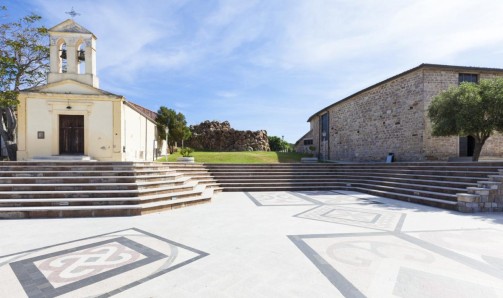Sant’Anna Arresi is a pretty town of almost three thousand inhabitants in lower Sulcis, with a thousand naturalistic, cultural and enogastronomic attractions. An autonomous municipality since 1965, it spreads over a hill overlooking a plain rich in coastal ponds (of Porto Pino, Maestrale, del Corvo, is Brebeis and Foxi), which are home to knights of Italy and flamingos. The lagoon area is bordered by the Porto Pino promontory, which is covered with a vast pine forest of very rare Aleppo pines, thorny oaks and junipers, and Mediterranean scrub. Along the Arresina coastline stands out Porto Pino, a four-kilometer sandy expanse divided into ‘first’ and ‘second’ beaches, bordering is Arenas Biancas, the imposing white dunes of Teulada territory.
The name of the village combines the patron saint with the nuraghe Arresi, around which the original nucleus of rural houses sprang up in the 18th century, gradually giving rise to the present settlement. The nuraghe ‘a tancato,’ that is, with two towers (the main one seven meters high and 13 meters in diameter) joined by walls enclosing a courtyard, dates from the Middle Bronze Age (15th-14th centuries B.C.). It stands in the central square, midway between the ‘old’ church of St. Anne and new parish church dedicated to the saint, celebrated in late July with a procession in traditional dress. In the square of the Nuraghe at the beginning of September a famous musical summer event has been held since 1986: On the borders of Sardinia and jazz, animated by great artists of the world jazz scene.
The Nuragic age in Sant’Anna is also documented by a fountain (which can be visited) within the settlement and by several other nuraghi and Giants’ tombs in the countryside, including Coi Casu, inhabited between the Ancient and Final Bronze Age (17th-11th centuries B.C.) and consisting of a complex nuraghe and a large village around it, the remains of which can be admired. The area assumed great importance later: the inlet of Porto Pino was a seaport in Phoenician-Punic times and a mercantile center under Roman rule.
Source: Sant’Anna Arresi | SardegnaTurismo – Official tourism website of the Region of Sardinia


